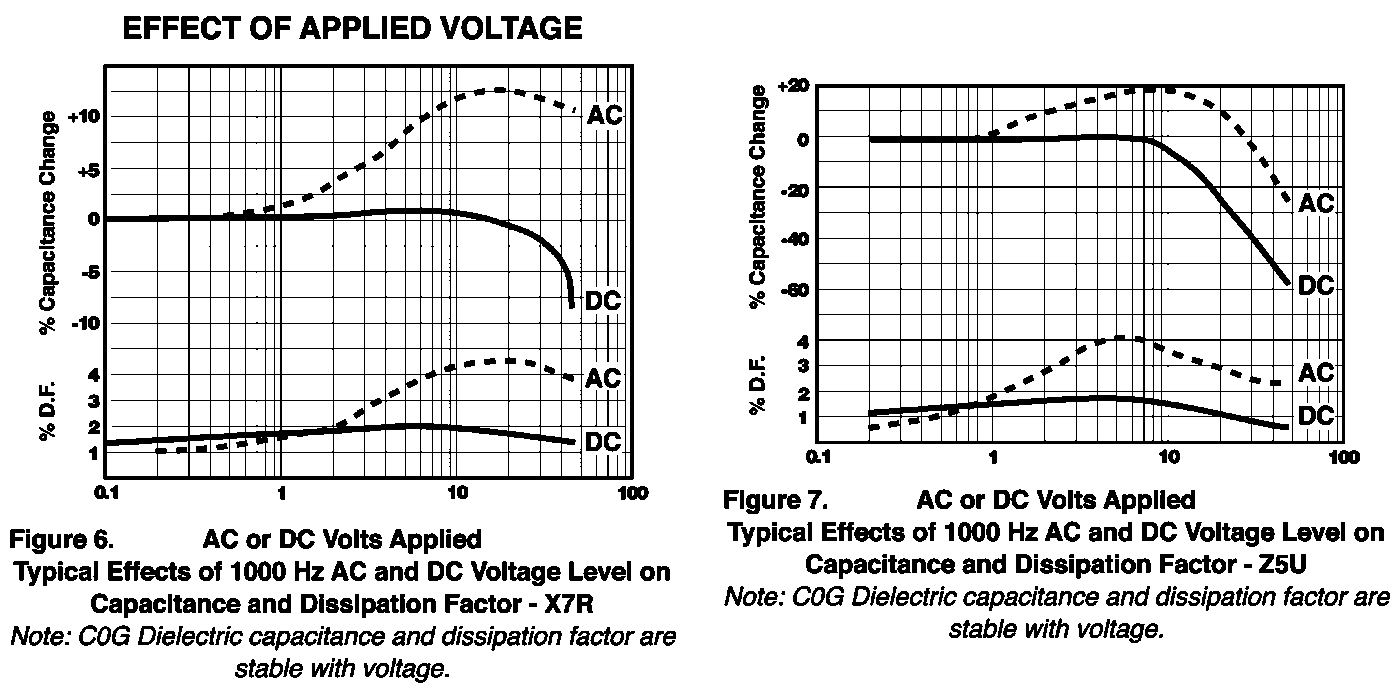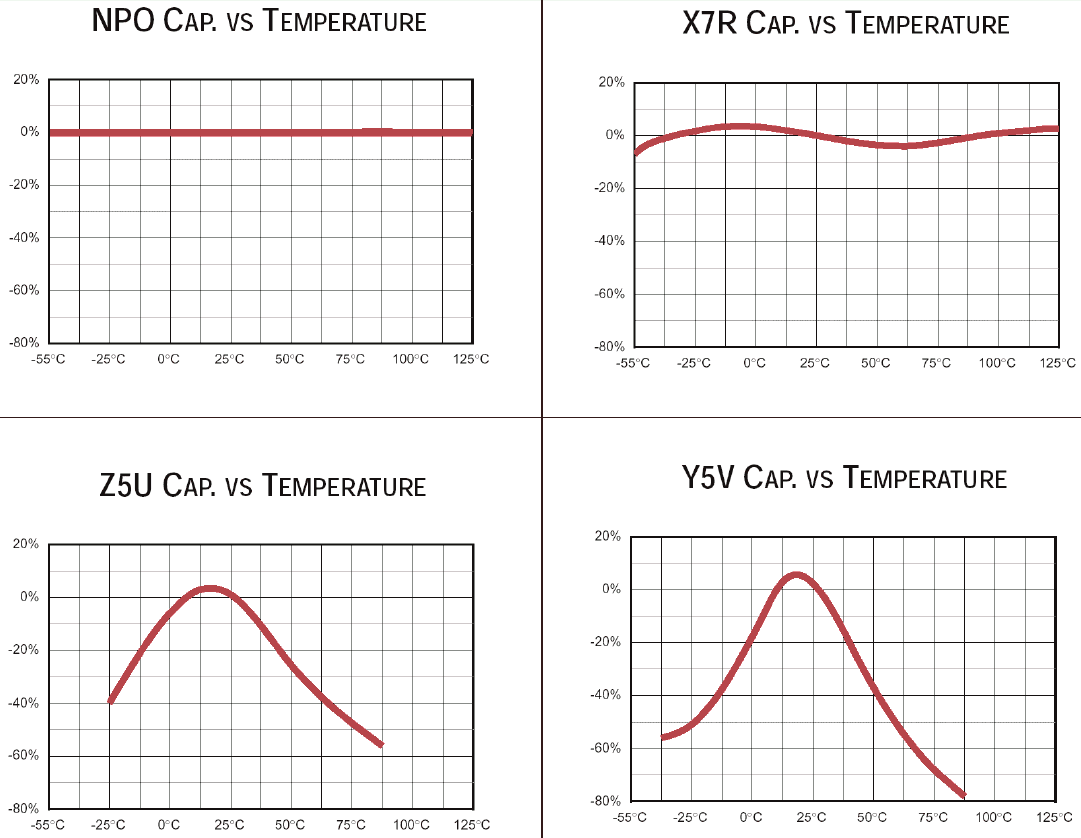
Why some ceramic Cs sometimes should NOT be used. pa0nhc v. 20150214
The pictures below are scans of data- or application sheets from manufacturers.
In critical audio or HF circuits, do NOT use the ceramic capacitors of the types X7R, Z5U or Y5V in the signal path. Use FILM or NP0/C0G capacitors instead.
FILM capacitors are far more stable than most ceramic capacitors.
Only NP0 (N P zero) or C0G (C zero G) type ceramic capacitors can be used in any application. They are stable. Thanks to their special construction, NP0 and C0G types (nearly) have no temperature drift, do not age, and show no capacitance variations when DC and/or AC voltages are applied to them. C0G and NP0 ceramic capacitors are especially suited for critical oscillator and filter applications. Murata (Conrad.nl) makes them up to 47nF.
But their sizes can be relatively big. Before ordering, compare their size and price with the same values film capacitors.
The material types X7R, Z5U and Y5V of ceramic capacitors allow for much larger capacitance values in much smaller packages.
But they have big disadvantages.
With voltages applied :
With varying DC voltages, the capacitance of a Z5U type capacitor can change up to -50% (!)
With varying AC voltages, the capacitance of a Z5U type capacitor can change up to +20% (!)
On X7R and Z5U type ceramic capacitors, keep applied voltages below 10Vdc and 500mVrms.
X7R, Z5U and Y5V types are mainly suitable as decoupling capacitors in uncritical situations (with NO ACvoltages applied).

Distortion generators.
If a X7R or Z5U type ceramic capacitor is inserted in the signal path (even for coupling or decoupling), they will vary in capacitance in the rhythm
of the applied AC-signal voltage.
Resulting in a changing reactance (ac-"resistance"). This can lead to signal distortion, especially when more than one signal is present at the same time. In these circumstances use FILM capacitors instead.
Capacitance changing with varying temperatures:
X7R type capacitors can change +-5% in capacitance value. This is moderate but they do not have the smallest dimensions.
If a (relative small) ceramic C is needed, use the X7R type.
Z5U type capacitors variate up to +5/-50% (!) in capacitance value. It is moderate between +10 and +40C.
Y5V type capacitors can variate up to +5/-80% (!) in capacitance value.
Capacitance change in time :
Those X7R, Z5U and Y5V types do age. Their capacitance value will gradually become smaller in a few years.
Short time instability :
Those X7R, Z5U and Y5V types can "jump" spontaneously in capacitance value, causing "pops" or "cracks".

